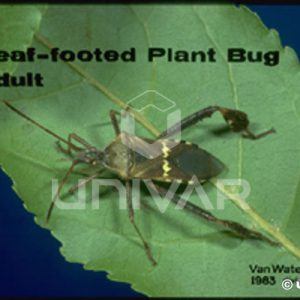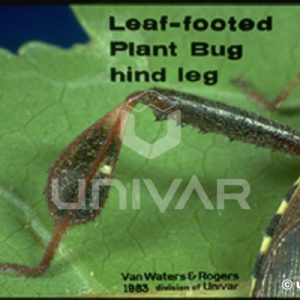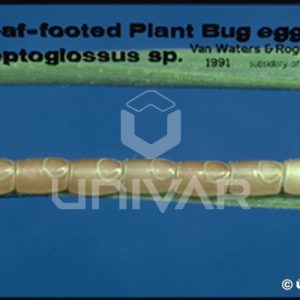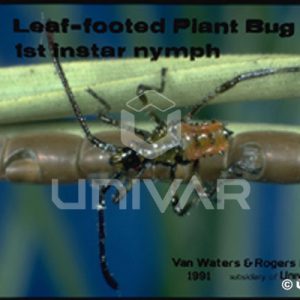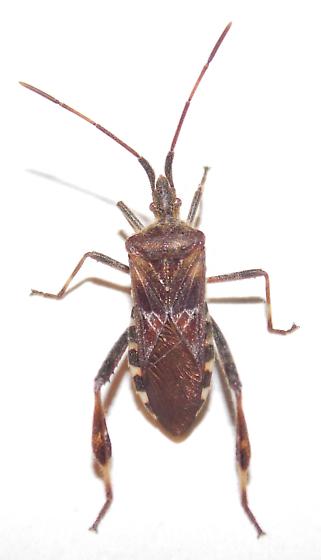
Common Name: Western Conifer Seed Bug
Latin Name: Leptoglossus occidentalis
Common Family Name: Leaf-footed bugs
Latin Family Name: Coreidae
Other Names: Leaf-footed bug
Origin: Originally found only in its native range along the west coast states, in the 1970’s and beyond it began to be found further east, and now is a common pest along the eastern seaboard as well. It also is now found throughout much of Europe, having been imported into that continent in the 1990’s.
Biology: One of a number of species in the same genus, and all generally called leaf-footed bugs due to the wide expansion on the hind legs. The name “conifer seed bug” also is descriptive, as this insect feeds on the sap of young cones on conifers, causing them to wither and fall from the tree. It is considered a nuisance pest on trees in most circumstances, but may be damaging in conifer plantations. In urban settings this large insect has become a nuisance by its tendency to overwinter inside homes and other structures, appearing on walls during the cooler months. It does not bite and does not harm household items, but will give off a strong odor if crushed. Eggs are deposited on the needles and thin stems of the host trees, the nymphs undergo 5 instar stages, and there is a single generation each year in North America.
Identification: These are very distinctive and large insects, with very long hind legs and with the tibia expanded widely in the middle of the segment. The overall color is reddish brown to brown, with long antennae, long legs, and well developed wings folded over each other and flat on top of the abdomen. A very distinctive white, zig-zag band runs across the middle of the wings.
Characteristics Important in Control: Control is not necessary for this insect outdoors, as it does little to no damage to landscape trees. Spraying insecticides should not be done for it on ornamental plantings. Indoors, where it is a nuisance in the winter, it should be prevented by good exclusion practices of sealing gaps around doors and windows and other openings to attics or wall voids from the outside. The occasional appearance of one of the bugs indoors can be resolved with a jar or a vacuum cleaner.
